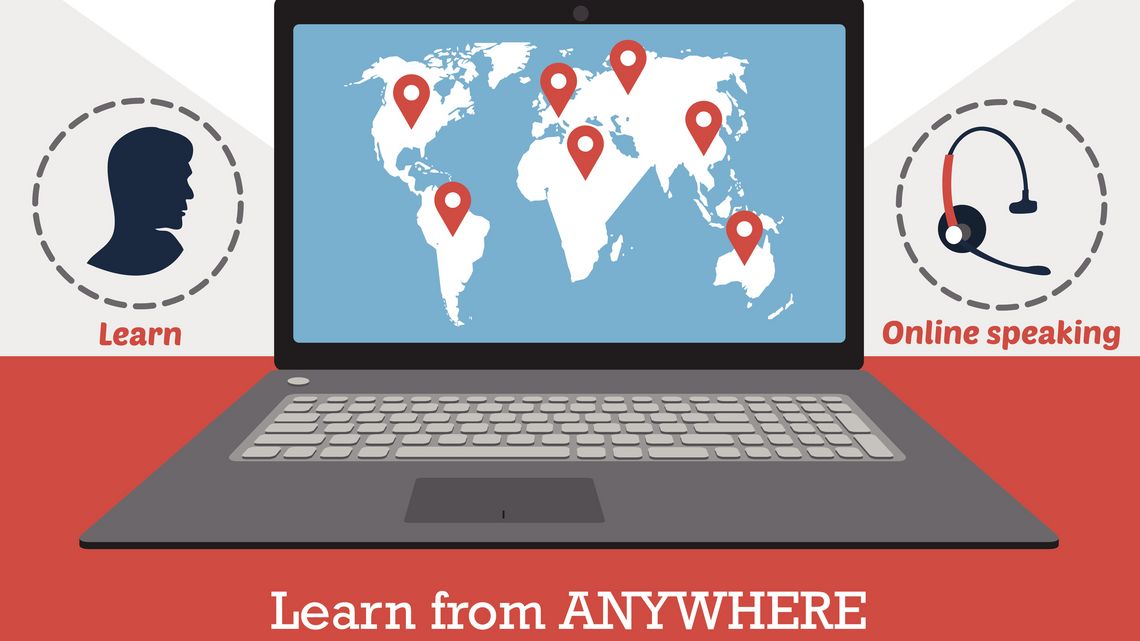
Did You Know That Most of Our Trainings Can Also Be Delivered Virtually?
Companies contact us all the time saying that they need to provide intercultural training for a group of employees who are spread out across the globe, but they lack the time or resources to gather everyone for a face-to-face training.
In these instances, virtual training is an obvious solution.
But many are still unsure what virtual training actually entails and what the practicalities are. That’s why we are sharing answers here to the most commonly asked questions we receive about virtual training.
If you think virtual training might be the solution you’re looking for and want to hear more, don’t hesitate to contact us!
What IS virtual training, actually?
To put it simply, virtual training is training in which the participants and the trainer are not physically in the same location – this is in contrast to a "traditional face-to-face training", where the trainer and participants are in the same room.At C3 we can design a virtual training programme in many different ways, depending on what your organization wants to achieve and which technical and practical solutions you prefer.
Virtual training can contain both synchronous and asynchronous elements.Synchronous learning means that the trainer and participants are present at the same time in a shared virtual room – typically online, where the participants can join from their own PC/smartphone and get immediate feedback from the trainer and from each other.
Synchronous learning can, for example, be an online workshop in which participants can ask questions along the way and also have discussions amongst themselves in smaller groups. Asynchronous learning means that the training participants can each take part in the training individually, whenever it is convenient for them.
Asynchronous learning can, for example, mean that participants log on to an online learning platform where they watch videos, read articles, and take tests or quizzes at their own pace.
Asynchronous learning can also take place offline, in which case participants can work independently on assignments they have received via email or have downloaded from a learning platform.
When should we choose virtual training instead of face-to-face training?
There are advantages to both virtual training and face-to-face training.Let’s say that you are part of a global team with members spread out across the globe. You want to strengthen your global mindset and improve day-to-day collaborations – consider these two examples of training solutions delivered either as face-to-face training or as virtual training:
#1: Example of solution with face-to-face training
You decide to gather the team at one location for a day-long, face-to-face training.All else being equal, it is easier to generate the energy and engagement that helps the training really take root when you are physically together – also for the participants who aren’t already especially motivated or who find it challenging to work independently.
As an extra bonus, you can use the training as an opportunity to network and build up relationships with each other, which can also strengthen your team’s collaboration.
#2: Example of solution with virtual training
You decide to hold the training virtually, offering 2 x 2-hour online workshops combined with additional exercises between the workshops and access to an online learning platform with videos and other resources.You receive a more cost-effective solution since you are saving on both the travel expenses and working hours that are associated with gathering the team in one location.
At the same time, the solution is more flexible; shorter workshops with no travel time are easier to fit into a busy calendar, and participants can log on to the learning platform to work on their assignments at whatever time and tempo suits them.
Which of these solutions is right for you depends on a number of variables, including:
- What you want to achieve with the training
- What your budget for the training is
- Your assessment of how motivated the participants are
- If the training solution should be easily scalable
We can also design a blended learning programme, which combines virtual training with traditional face-to-face training.
Regardless of which model you choose, the training will always be tailored to your needs.Contact us! We’re happy to chat with you about the right solution for your organization.
Which types of trainings can you deliver virtually?
We can deliver any of our intercultural trainings either 100% virtually or as a combination of virtual and face-to-face training – and this applies to trainings for both individual managers/employees and for teams and larger groups.Read more about the wide variety of intercultural training programmes offered by C3 here.A virtual training programme is much more than just a "virtual copy" of a traditional face-to-face training programme. When we design a virtual training programme for you, we draw upon extensive knowledge of the most effective ways to learn in a virtual space.
The trainers for our virtual programmes also have a great deal of hands-on experience, both with working globally and with delivering trainings virtually to clients spread out across the globe.
Is it difficult to hold participants’ concentration when the training happens virtually?
It’s true that it’s more challenging to hold participants’ concentration with virtual training than with face-to-face training.Participants in an online workshop might be tempted to multitask – check emails, finish up a few assignments, or maybe grab a quick cup of coffee.
That’s why when we plan the individual elements in your virtual training programme – such as online workshops, for example – we draw upon a wide range of methods and tools that ensure that participants are attentive, concentrated, and engaged.
Examples of concrete tools we can use during an online workshop:
- Short and focused presentations from the trainer
- Polls and quizzes
- A variety of chat functions
- Screen-sharing
- Virtual "breakout rooms", where participants are divided up into smaller groups to discuss a question or share experiences
After an online workshop, we typically send out recordings of the presentation (both sound and slides) and transcripts from the chatroom, so participants can always return to the workshop’s material and refresh their knowledge.
Are there any requirements, technical or otherwise, that our business should be aware of if the training will be delivered virtually?
When we design a virtual training programme for your business, we first discuss with you the scope and goal of the training – and on the basis of that, we decide what technology is appropriate for your project.If we include online workshops, webinars, or similar elements in the training, we will be happy to provide the necessary video-conferencing service and other online tools.
If you would prefer to work with the platforms that are already used at your company (for example Lync / Skype for Business), we can also make that work.
Certain types of virtual training, such as one-on-one coaching, can take place via telephone, but otherwise you will typically need to have internet access to log on to the different platforms we use for virtual training.
If the training includes online workshops, webinars, etc., your internet connection should be relatively fast and stable, and we recommend that participants use a headset.
We offer you advice on how you can create the best possible environment for learning – for example, by minimizing background noise and by ensuring that all participants have access to the same technologies.
Can I see some concrete examples of trainings you have delivered virtually?
Of course! Here are three examples of training programmes that we delivered 100% virtually. Contact us if you would like to hear about more examples.#1: CT-TECHNOLOGIES: Online global mindset workshops strengthen collaboration around the world
CT-TECHNOLOGIES, a company that builds energy-efficient climate-controlled facilities for food production and other industries, has offices across the globe with employees representing a wide variety of cultures. The company wanted to give their employees training to support their global communication.To ensure the training was accessible to everyone no matter their location, they decided to provide global mindset workshops online.
#2: Learning to navigate the Danish workplace: Online coaching accommodates a busy travel schedule
C3 Consulting has an ongoing cooperation with Grundfos to provide Danish cultural training for international assignees and accompanying family members who are relocating to Denmark.For one manager, a busy travel schedule made it difficult to find time to meet in-person, so C3 delivered the training virtually, where and when it suited him best.
#3: Combining GLOBAL STEPS with 1:1 coaching: A German manager relocating to Denmark prepared for his new, global role
A promotion for a German manager meant relocation from Germany to Denmark. His new role included daily contact with production sites in East Asia as well as several business trips per year.To prepare for his new responsibilities, he combined C3's virtual learning programme GLOBAL STEPS with online intercultural executive coaching.
Want to know more?
Are you facing a challenge that virtual intercultural training can help solve? Contact us to chat about what effect you want to achieve with the training – and we will design a programme that meets exactly your needs.Is virtual collaboration also a part of your everyday work life? And could you use input into how you can collaborate better long-distance? Then take a look at our trainings for distance management and virtual global collaboration.
Do you want regular updates with inspiration for how to work effectively across cultures? Follow us on LinkedIn or sign up for our newsletter using the form below.

